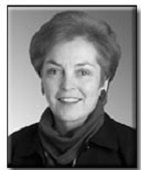非常抱歉,
你要访问的页面不存在,
非常抱歉,
你要访问的页面不存在,
非常抱歉,
你要访问的页面不存在,
验证码:

职称:Professor Emeritus
所属学校:Georgetown University
所属院系:Department of Neuroscience
所属专业:Neurobiology and Anatomy
联系方式:202.687.1452
Ph.D. (Anatomy) 1981, Medical College of Pennsylvania
Scientific advances in the past two decades have made it clear that the long standing dogma that central nervous system (CNS) neurons are inherently incapable of regeneration after injury is no longer tenable. The long range goal of the research program in my laboratory is to identify the requirements of developing and mature CNS neurons for survival and axonal regeneration after injury and to identify ways to enhance regenerative growth and recovery of function after spinal cord injury at birth or at maturity. It is likely that both intrinsic neuronal and extrinsic environmental factors contribute to regenerative success or failure in particular populations of neurons. The ongoing studies seek: Define the cellular and molecular characteristics of neurons that regenerate successfully after spinal cord injury during development or in the adult, and Determine the extent to which changes in the cellular and molecular characteristics of the environment of the host spinal cord caudal to the spinal cord transection contribute to regeneration after spinal cord injury. We predict that molecules known to contribute to the normal development of CNS pathways play a role in regeneration after spinal cord injury. The ongoing experiments use spinal cord lesions and transplants and stem cells in newborn and adult rats and the administration of exogenous neurotrophic support (BDNF, NT-3) to define the cellular and molecular characteristics of neurons that regenerate successfully. We are using in situ hybridization, Western analysis, PCR, anterograde and retrograde neuroanatomical tracing, immunocytochemistry and quantitative morphometrics to address the specific aims. Taken together, the studies are designed to increase our understanding of the cellular and molecular mechanisms by which transplants and neurotrophins increase regeneration after spinal cord injury at birth and in the adult by altering intrinsic neuronal and extrinsic environmental influences on axonal growth. Current exciting work in the laboratory indicates that in adult animals, after complete spinal cord transection, transplants and neurotrophic factors (growth factors) permit the regeneration of some CNS pathways projecting from the brain to the spinal cord. Quite surprisingly, when we compared the amount of regrowth and the amount of recovery of function, we find that both axonal growth and recovery of function are actually greater after chronic spinal cord injury (2 weeks) than that elicited after acute injury. The cellular and molecular mechanisms underlying the regeneration are under investigation. We are now at the point in these studies that we wish to determine the alterations in gene expression profiles in specific brain regions during axonal regeneration using DNA microarray approaches to identify gene alterations (and related protein changes) associated with cell death, cell survival and regeneration after CNS trauma. After CNS injury, rehabilitation strategies in the post-injury period lead to activity-dependent structural plasticity and enhanced recovery of motor function in both animal models and humans (stroke, spinal cord injury). In addition, interventions that alter the environment at the injury site and others that increase the intrinsic neuronal capacity for growth lead to anatomical reorganization within the injured CNS. Plasticity occurs both in those pathways damaged directly and compensatory reorganization occurs in undamaged pathways. We have shown that transplants of fetal spinal cord tissue and the exogenous application of neurotrophic factors increase anatomical plasticity and this structural plasticity contributes to recovery of motor function. More recently, we have demonstrated that one of the mechanisms underlying regeneration in a CNS environment is elevation of neuronal cAMP. Ongoing studies test the hypothesis that after spinal cord injury, pharmacological agents to increase CNS plasticity (regeneration and axonal sprouting) and rehabilitation strategies to alter activity act synergistically to increase both the nature and extent of the structural plasticity and the rate and extent of recovery of motor function. Studies proposed will use a cervical spinal cord over hemisection at C 3/4 and pharmacological approaches to increase intracellular cAMP and alterations in activity (enriched environment, acrobatic training, robotic training). We will examine the extent of anatomical plasticity at selected spinal and supraspinal levels and the timecourse and extent of recovery of patterned (locomotion) and skilled (reaching) movement. Surprisingly little is known about the extent of anatomical reorganization that occurs in the injured CNS. Still less is understood about how this reorganization is influenced by alterations in the level of activity after injury. Even with the advent of strategies to increase regeneration, it is unlikely that complete restoration of all of the original projections to the spinal cord will be restored. Rather, both pharmacological enhancement of neural plasticity and activity-dependent plasticity to enhance the function of those pathways that are restored, will be essential components of therapeutic approaches aimed at maximizing function after spinal cord injury. A better understanding of the changes that take place within the injured CNS and how they are regulated will be important in rehabilitation strategies to increase neuroplasticity and functional recovery after spinal cord injury.